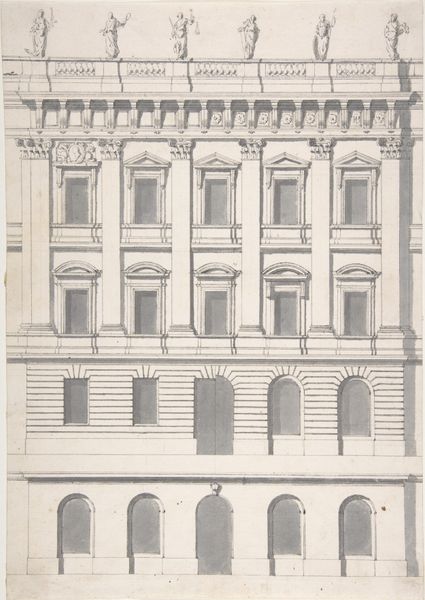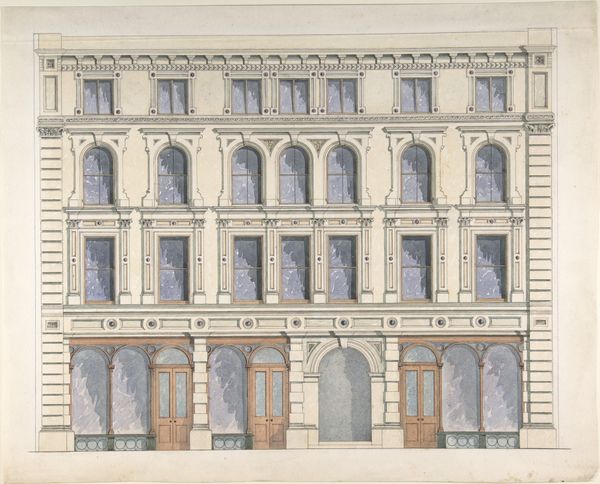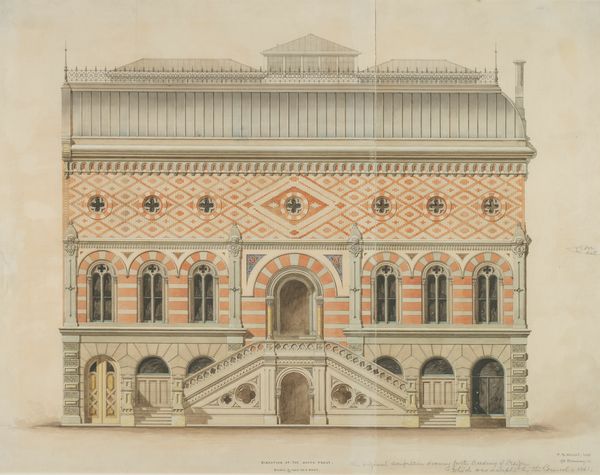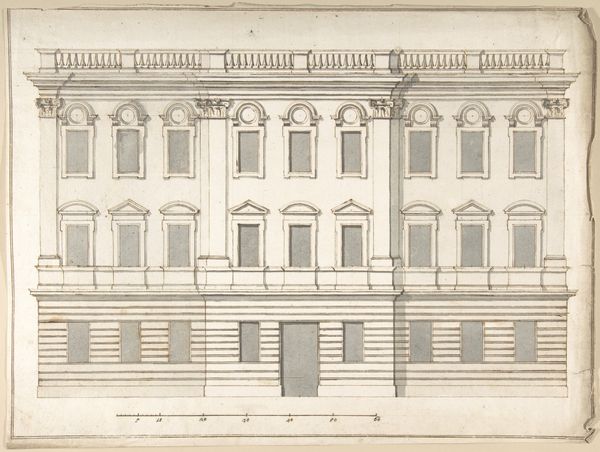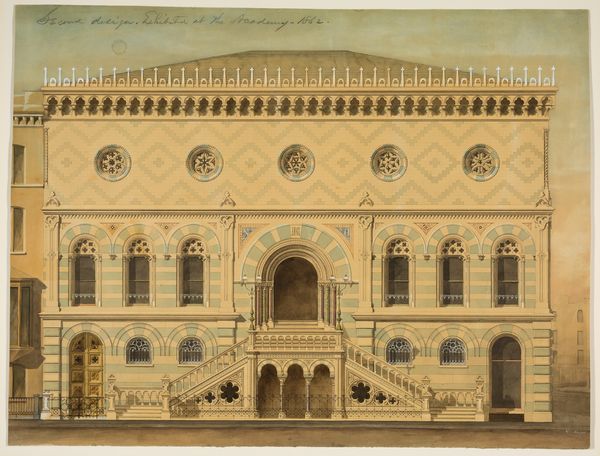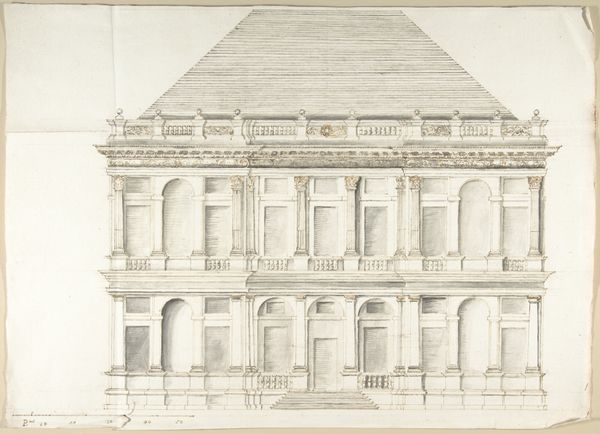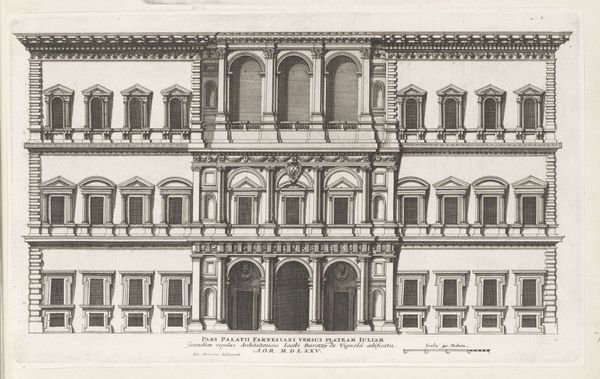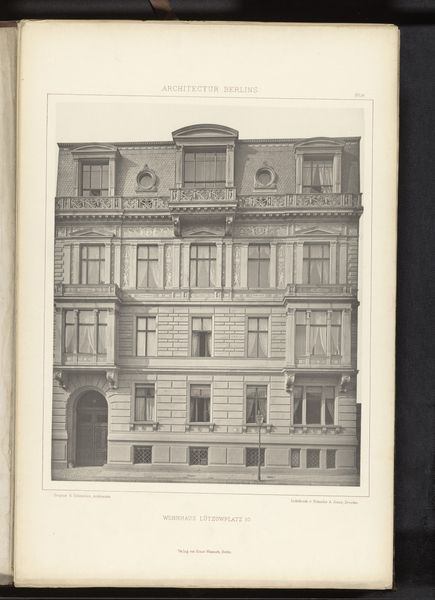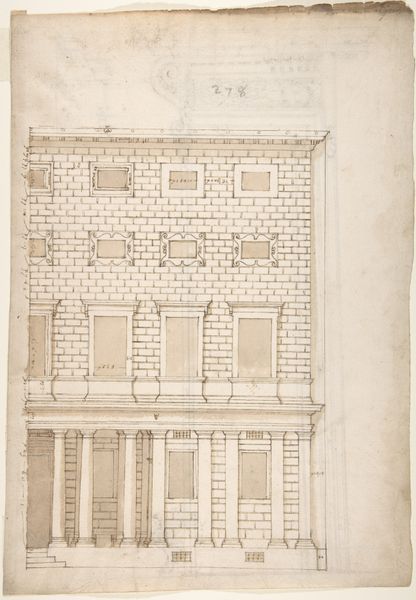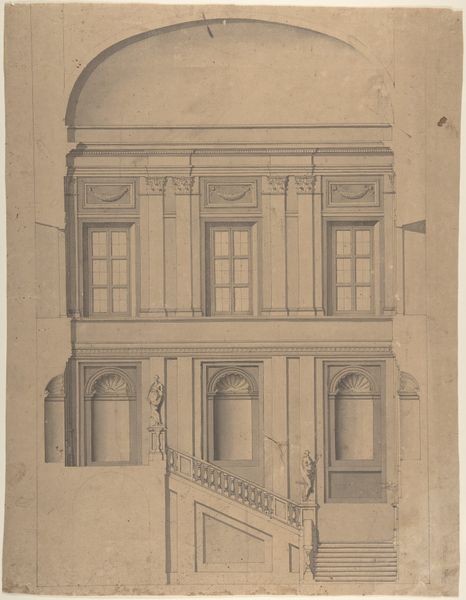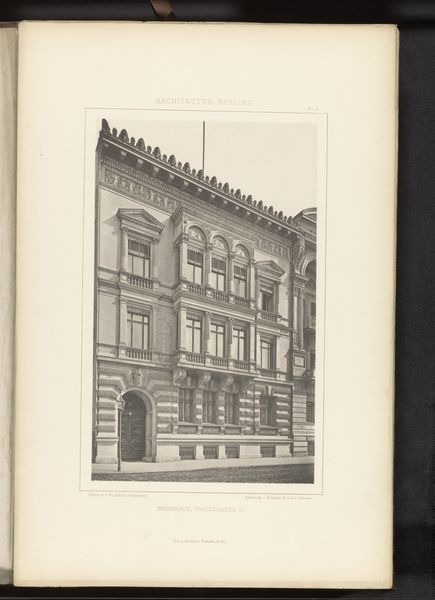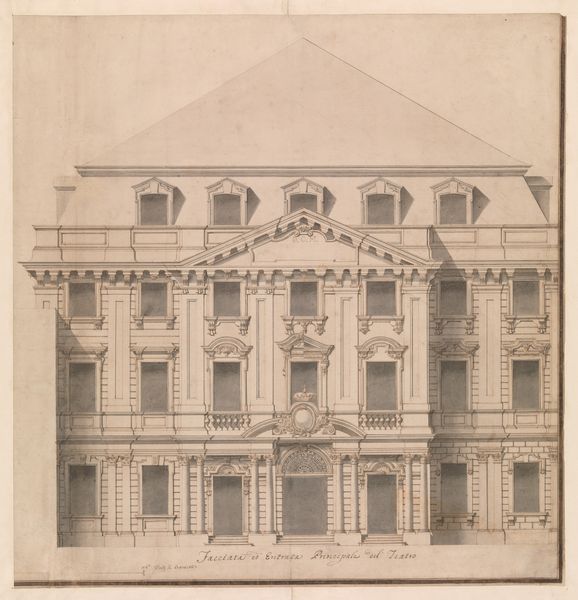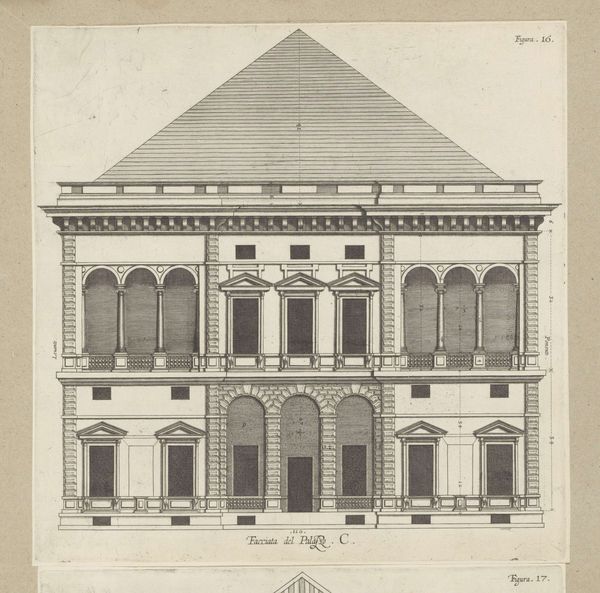
Lenox Building, Chicago, Illinois, Perspective 1872
0:00
0:00
drawing, paper, ink, pencil, architecture
#
architectural sketch
#
tree
#
drawing
#
paper
#
ink
#
pencil
#
cityscape
#
academic-art
#
watercolor
#
architecture
#
realism
Dimensions: 51.2 × 25 cm (20 3/16 × 9 7/8 in.)
Copyright: Public Domain
Editor: This drawing, "Lenox Building, Chicago, Illinois, Perspective," from 1872, made with ink and pencil on paper, feels like a hopeful glimpse into a booming city's future. But it’s also a bit sterile, devoid of much life beyond a few figures. What story does it tell, especially knowing it’s from just after the Great Chicago Fire? Curator: It’s essential to understand this image as part of Chicago’s grand reconstruction narrative. The Fire decimated much of the city in 1871, and this drawing, by Carter, Drake, and Wight, represents not just a building, but a collective aspiration for renewal. It visualizes a monumental, imposing building. Think of the message a drawing like this sends – "Chicago is back, and it will be grander than ever.” Consider also who this image was for: was it meant to attract investment, or demonstrate the firm’s capabilities? Editor: That makes a lot of sense. The figures now read as almost staged, like props demonstrating scale and hinting at prosperity. Curator: Precisely. The drawing becomes a tool, a piece of persuasive imagery deployed in a very specific socio-economic context. How do you view the architectural style in relation to this? Editor: I see a very grounded classicism – almost Romanesque with the rounded arches of the windows. Was this a deliberate choice to communicate stability and permanence? Curator: Absolutely. The classical vocabulary lent itself to an image of institutional strength, but it also aligned Chicago with longer histories of power and resilience – referencing other major centres rebuilding from disasters. The Lenox Building would have signaled a break from the recent past and also offered the city’s population something solid and known, familiar to people. We can think of it not only as architecture but as propaganda. Editor: So, beyond aesthetics, this drawing really embodies the rebuilding of Chicago's image, demonstrating power and a new chapter through architecture. Thank you! Curator: A lens into the social and cultural climate influencing how cities rebuild. An important intersection between public imagery, propaganda, and commercial and civic intentions.
Comments
No comments
Be the first to comment and join the conversation on the ultimate creative platform.
